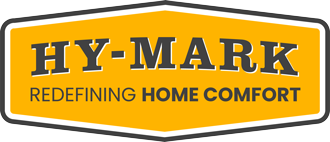You have a lot on the go, so it’s normal if tending to the needs of your furnace, air conditioner, and other HVAC equipment often comes last on the list of priorities. That’s why we have compiled this primer on common HVAC equipment and care. Whether you have recently moved into a new home or gotten new equipment, or it has been a while and you need a refresher, this guide will help you gain an understanding of your equipment and the basic maintenance it requires.
Air Conditioner, Furnace, and HRV/ERV Maintenance
This following schedule is based on the use of a standard 1″ furnace air filter. If you are using a thicker filter you will be able to change it once or twice a year, depending on your home’s attributes, respiratory sensitivities, and personal preference.
Replacing Your Furnace Filter
Turn off your furnace at the switch. Generally, the air filter cabinet is on the left or right side of the furnace in a vertical position and is 1 – 5 inches wide. You should be able to pop off the front panel by hand. To see if your filter is dirty, hold it up to the light and compare it with a clean filter. If the filter looks dirty and is near the prescribed length of time it is supposed to last, it is time to replace it.
Why to Get Preventative Maintenance
Just like a car, your home comfort equipment requires regular tune-ups. Manufacturers recommend having your furnace and A/C professionally maintained annually to preserve efficiency and extend the lifetime of the equipment. In some cases, it may even be required to keep your warranty valid. Since maintenance includes cleaning and checking of all functions, these visits often catch small issues before they grow and lead to big repair needs or equipment failure.
Did You Know?
The air conditioner ventilates through the furnace, so it is still extremely important that the furnace filter is changed throughout the cooling season. Cool and warm air travel differently, so use a filter no thicker than .5” or 1” during the cooling season to avoid restriction of airflow. A thicker filter with a high MERV rating can be used in the heating season.
Understanding the Purpose of Your ERV/HRV
Your home either has an energy or heat recovery ventilator, whose purpose is to exchange stale indoor air with fresh outdoor air. This ventilates carbon dioxide, fumes, cooking odours, dust, and excess humidity out of your home. A new home can take 12 – 18 months to fully dry out from the construction, so you may run your ERV/HRV more during this initial period.
ERV/HRV Filter Maintenance
1. Unplug the unit
2. Remove reusable filters and vacuum off dust/dirt
3. Wash with warm water and dish soap. Rinse and let dry completely before replacing
Cleaning the ERV/HRV Core
This should be cleaned once/year at the end of summer. Vacuum the plastic core with a soft brush and then soak in a mild soap solution for 3 hours. Rinse it and let it dry completely before reinstalling. During your furnace maintenance, a technician can do this for you upon request.
Controlling the Humidity in your Home
As a rule of thumb, set your ERV/HRV to run intermittently in the winter and do not run it in the summer. Acceptable humidity levels in winter are 15 – 25%, while in summer you can expect 40%. You can adjust your humidity levels from your thermostat/humidistat or control on your humidifier.
For more tips check the FAQ page or email service@hy-mark.ca.
